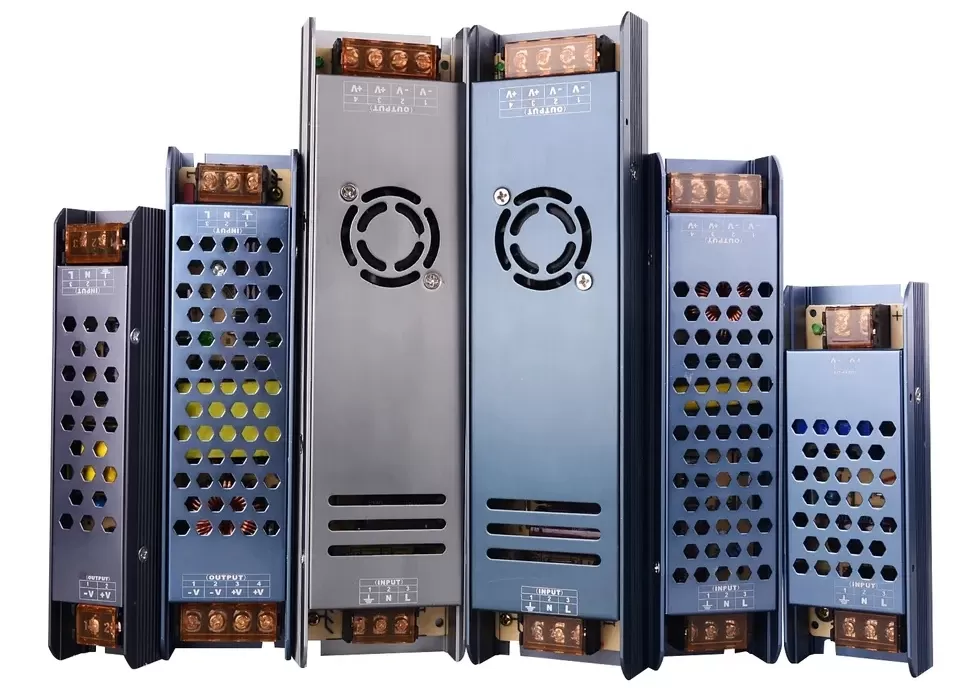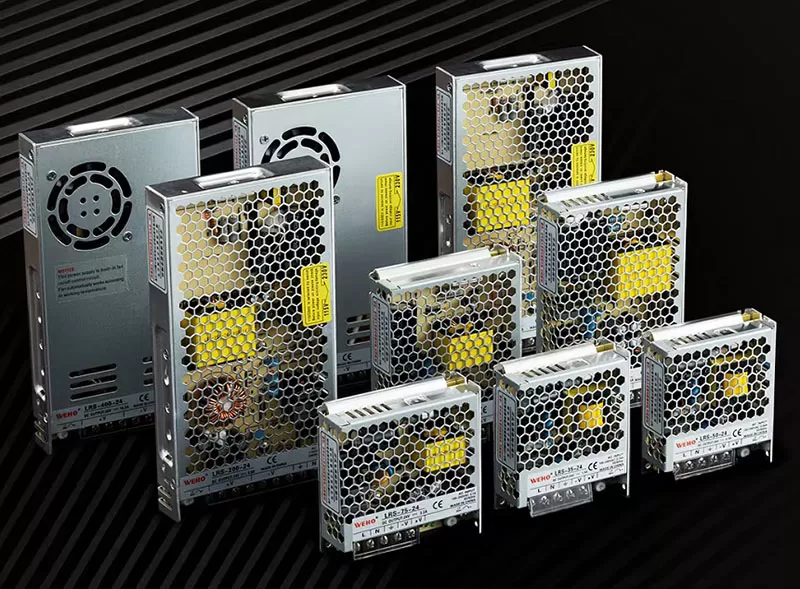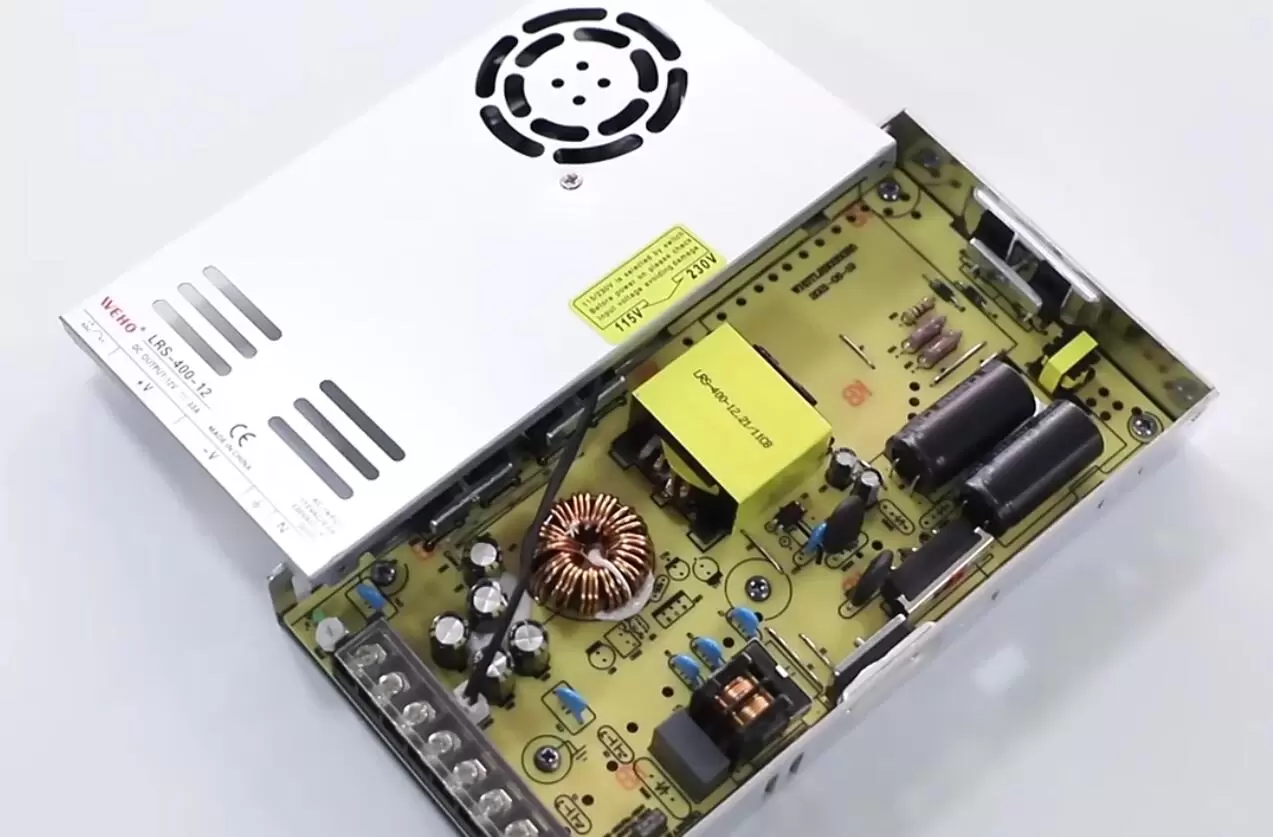To ensure optimal performance and longevity of your LED lighting system, selecting the correct electrical components is crucial. When you consider power options for LED lights, you’ll come across LED drivers and LED transformers. But which of these options is best for your specific needs? How to ensure high performance and security at all times?
What an LED Driver Is and How It Works?
LED drivers take AC and convert it to DC, which is how most LED bulbs and lamps work. In most fixtures, the LED driver is located on the back of the fixture or inside the fixture. Some manufacturers require you to use a separate product.
LED drivers are electrical devices that regulate power to LED lighting systems. They convert high-voltage AC or DC power from the mains supply to a low-voltage DC output suitable for LEDs.
LED drivers precisely control current and voltage levels to ensure the stable and efficient operation of LED lights.
LED drivers are designed with different driver types including constant current (CC) drivers, constant voltage (CV) drivers, and constant voltage/current (CV/CC) drivers.
When the LED load requires a fixed current source, a constant current LED driver is typically used, whereas when a variable load is present, a constant voltage driver is preferred. CV/CC drives combine the functionality of both for application flexibility.
Why Are LED Drivers So Important When Installing Lights?
LED drivers can help prevent thermal runaway in installed LED lights by:
The output of the LED driver matches the electrical aspects of the LED itself
LED driver offsets forward voltage changes
This cancellation provides a stable 12v or 24v LED driver current
All of these help prevent thermal runaway

LED drivers are essential when installing lights for several reasons:
Voltage Regulation: LED drivers help regulate and maintain a consistent voltage supply to the LED lights. LEDs are sensitive to voltage fluctuations, and an improper voltage supply can damage the LED chips or reduce their lifespan.
LED drivers ensure that the lights receive the right voltage, protecting them from overvoltage or under-voltage situations.
Current Control: LED drivers control and limit the amount of current supplied to the LEDs. LEDs have a specific current rating, and exceeding this rating can lead to overheating and premature failure.
LED drivers prevent excessive current flow and ensure a steady, optimal current supply for the LEDs.
Dimming Capability: LED drivers often include dimming functions, allowing users to adjust the brightness of the lights.
Dimming is a significant advantage of LED technology, as it enables energy savings and creates different lighting atmospheres. LED drivers facilitate smooth and flicker-free dimming of LED lights.
Efficiency and Energy Savings: LED drivers typically have high efficiency, converting AC power to DC power with minimal losses.
They ensure that the LED lights utilize power efficiently, converting more electrical energy into light and wasting less as heat. LED drivers contribute to energy savings and a lower carbon footprint.
Compatibility and Safety: LED drivers ensure that the LED lights operate within their specified parameters, avoiding issues related to incompatible voltage or current supply.
They protect LED lights from power surges, overloads, and short circuits, enhancing safety. Moreover, LED drivers generally comply with electrical safety standards to ensure reliable and safe operation.
What Is A Transformer?
LED transformers are power supplies used with LED lighting systems. A transformer is an electrical device used to change the voltage level of a power supply. They work by using electromagnetic induction to transfer electricity between two or more circuits.
Transformers are traditionally used with incandescent and halogen lighting systems to convert high-voltage alternating current into the low-voltage alternating current or direct current required by traditional light bulbs.
The Difference Between An LED Driver and A Transformer
LED drivers and transformers uniquely perform distinct roles, yet they are both indispensable components within an LED lighting infrastructure.
They are meticulously engineered to regulate the amperage passing through LED light systems which guarantees that these lights receive power commensurate with their precise needs.
This thoughtful mechanism ensures just the optimal energy distribution, thus mitigating any risks of overpowering or potential circuit damage.
On the other hand, transformers execute the crucial function of transmuting energy from one voltage level to another.
Their key role within an LED lighting system is to ascertain that both supply voltage and frequency correspond aptly with the fixtures.
The collective operation of LED drivers along with transformers culminates in fostering optimal performance, simultaneously extending the lifespan of your LED lighting system.
Generally speaking, the main function of both is to ensure that the power fed into the LED bulb is reduced and within the range required to maintain lighting. Their differences are mainly reflected in the following aspects.
LED driver
Typically limited to output between 100W – 200W
Mainly used in smaller home settings
Efficiently powers a single or several LEDs
LED transformer
Able to withstand higher voltages than LED drivers
Effective for LED strips that require more power
Ability to regulate greater total power flow

Key Considerations for Choosing Between LED Drivers and Transformers
When deciding between LED drivers and transformers for your lighting project, it is crucial to take several factors into account.
Here are key considerations that will guide you towards making the right choice:
Compatibility with Lighting Technology
One of the primary considerations is the compatibility of the driver or transformer with the lighting technology being used.
Transformers are generally suited for traditional lighting technologies, such as incandescent or halogen bulbs, which operate on AC or DC voltage.
Conversely, LED drivers are specifically designed for LED lighting systems, providing the necessary control and protection features for efficient LED operation.
Voltage and Current Requirements
Transformers typically work with fixed voltage levels, which may limit their compatibility with LEDs requiring low-voltage DC power.
LED drivers, in contrast, offer greater flexibility, with options for both constant voltage and constant current regulation depending on the specific requirements of the LEDs being used.
Dimming Capabilities
If your lighting project requires dimming functionality, it is vital to consider the dimming capabilities of LED drivers and transformers.
While transformers can provide basic dimming control for traditional lighting technologies, they may not be compatible with dimmable LED bulbs due to differences in voltage levels and dimming protocols.
LED drivers, however, offer a broader range of dimming options, including 0-10V, PWM, DALI, and DMX, allowing for precise control over brightness levels.
Efficiency and Power Factor
LED drivers are known for their high energy efficiency, converting electrical power with minimal losses. They also offer power factor correction (PFC) capabilities, which reduce reactive power, enhance voltage stability, and comply with energy efficiency regulations.
Transformers, while efficient in their own right, may not match the efficiency levels and power factor correction capabilities of LED drivers.
Size and Installation Considerations
Transformers, especially those designed for higher power loads, tend to be bulkier and larger compared to LED drivers. Additionally, transformers may require separate enclosures and ventilation to minimize heat buildup.
LED drivers, on the other hand, are compact and often integrated into the lighting fixture, allowing for easier installation and space-saving benefits.

Conclusion
An LED driver is a device used to power LED lights. It converts AC current into DC current, which is then used to power LEDs.
An LED driver differs from a transformer in that it regulates the amount of current flowing to the LED, whereas a transformer simply steps down the voltage.
The LED market is always changing, and to ensure your LED lighting needs are met, confirm your fixture’s specifications and find the right LED driver or electronic transformer.
If you have any questions or want to know which LED driver you need, please feel free to contact us.








